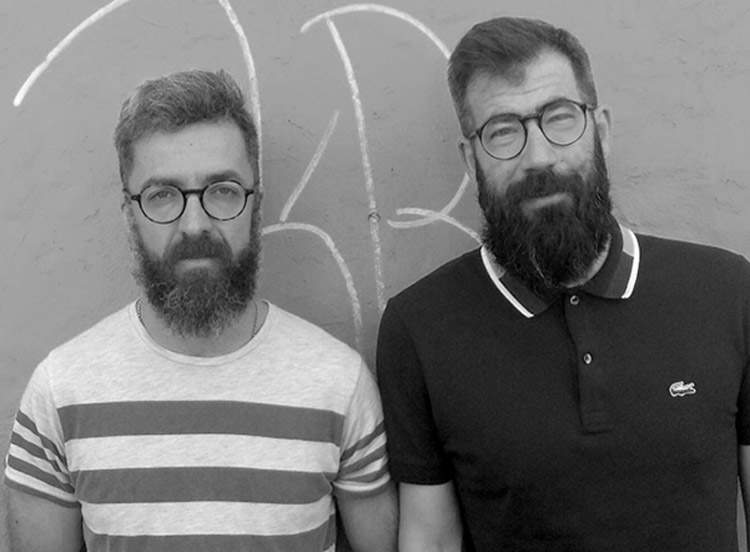Drawing as an invitation to collecting: interview with João Mourão and Luís Silva
One of the great novelties of the 2017 edition of Artissima, the major contemporary art fair that this year will take place, for the 24th time, in Turin, November 3 to 5 at the Oval Lingotto Fiere, is the Drawings section, entirely dedicated to this classic but still relevant form of expression. The drawings section will feature the work of twenty-six artists from as many galleries. We spoke with the curators, LuÃs Silva and João Mourão, directors of Kunsthalle Lissabon, one of the most active and energetic contemporary art institutions in the Portuguese capital. Translation from English is by Ilaria Baratta.
 |
| Left LuÃs Silva, right João Mourão |
Artissima’s “Drawings” section represents a first for the event: do you feel the burden of blazing a new trail?
More than a burden, for us it is a challenge. The drawings section is, precisely, totally new, so it is a tabula rasa. The section can be anything we want it to be, and we do not deny that this aspect can be overwhelming: so we followed a working method that would allow us to narrow the field, so that we would have a well-calibrated section that can explore drawing in a complex way, not only as a medium, but also as a narrative and as a metaphor. As far as we are concerned, that is what is interesting about drawing, which is the ways in which it has been probed from all sides, so that we have a very broad idea of what it is.
One of the main “planks” of your experience at Kunsthalle Lissabon is the close collaboration with artists: did you also work closely with artists for the “Drawings” section at Artissima in Turin?
Yes, our work at Kunsthalle Lissabon is centered on the relationship that both we curators and the institution itself establish with the artist. It is a personal, very intense and intimate relationship. However, the context of a specific section of a contemporary art fair is something very different, and if we want to be successful, we have to recognize this starting point. There are different actors that take part in this relationship, it is not just about thinking about us and the artist, as if it were a personal exhibition. There are also the galleries, and the relationships they themselves establish with the artists, and that plays a key role. Then there is also our relationship with the gallery, which is equally important in articulating the project. And then the commercial concerns, since everyone involved, i.e., the artists, the gallerists, the curators, the fair organization, want each presentation to lead to commercial success as well. Ultimately, these are two profoundly different curatorial contexts. Obviously, however, one cannot exist without the other: we tend to think of these relationships as those that are present in an ecosystem. Being aware of these issues, how different they are but at the same time how similar they are, is also part of the challenge.
What specifically will we see at Artissima?
In the “Drawings” section, you will see a carefully crafted selection of personal projects by artists from different generations, and from geopolitical contexts that are themselves very different, who have explored drawing in very different manners: from more traditional proposals that consider drawing as an artistic medium in itself, to proposals that take drawing to its limits. We believe we have succeeded in presenting all the possibilities and all the challenges that drawing brings, both to artists, to ourselves, and to art lovers.
But what about you? What is the goal you have set for yourselves?
As mentioned earlier, the section addresses drawing in all its complexity. We want to show its purpose both as a tool and as a narrative. We want to invite the audience to think about drawing in the same way that artists think about it.
What is the relationship between contemporary collecting and drawing, a practice we all imagine to be more afferent to art history than contemporary art?
The relationship between drawing and collecting is the same as between painting, sculpture, photography and curating. However, the interesting aspect is that drawing can be a very special and effective way to invite people to collect, perhaps suggesting that certain drawings can be displayed in their homes. So we think that drawing, and especially a drawing section in a contemporary art fair, is a very interesting way to initiate the public into art collecting. And if a fair can create new collectors, well, that’s great!
Warning: the translation into English of the original Italian article was created using automatic tools. We undertake to review all articles, but we do not guarantee the total absence of inaccuracies in the translation due to the program. You can find the original by clicking on the ITA button. If you find any mistake,please contact us.




























